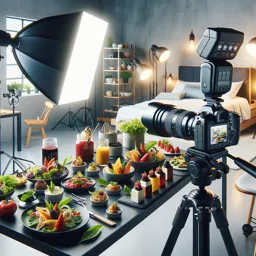The iPhone has transformed photography, putting a powerful camera in everyone’s pocket. Whether you’re a beginner or have some experience, learning to leverage your iPhone’s capabilities can help you capture breathtaking images without extra gear.
Unlocking Your iPhone’s Photography Potential
Mastering your iPhone camera starts with understanding its features and using simple techniques to improve composition, lighting, and focus. Small adjustments can make a big difference in image quality.
1. Master the Basics: Clean Your Lens and Use Grid Lines
Before you start snapping, ensure your lens is clean—smudges or fingerprints can ruin a great shot. Enable grid lines in your camera settings to help frame your subject and follow the rule of thirds. This simple trick adds balance and interest to your composition.
2. Focus, Exposure, and Lighting
Tap the screen where you want your camera to focus. Adjust exposure by sliding your finger up or down (look for the sun icon). Take advantage of natural light for flattering photos, positioning your subject so the light illuminates them from the side or front.
3. Explore Portrait and Night Modes
Modern iPhones offer versatile shooting modes.
- Portrait Mode: Creates depth-of-field effects, blurring the background for a professional look.
- Night Mode: Allows brighter, clearer shots in low-light conditions. Experiment with these modes to enhance your photography skills.
4. Utilize Burst Mode for Action Shots
For fast-moving subjects like kids or pets, hold down the shutter button for burst mode. This captures a rapid sequence of shots, letting you select the perfect moment later.
5. Edit Right on Your Device
After capturing your images, use the iPhone Photos app to crop, adjust exposure, tweak colors, and apply filters. For more advanced editing, try third-party apps like Snapseed or VSCO to enhance your photos without compromising quality.
6. Composition Tips
- Leading Lines: Use paths, roads, or fences to draw the viewer’s eye through the image.
- Symmetry and Patterns: Seek repeating forms or reflections for striking visuals.
- Negative Space: Leave uncluttered areas for a clean, dramatic effect.
Conclusion
Your iPhone is a powerful tool for everyday photography, whether capturing landscapes, portraits, or spontaneous moments. With practice and these techniques, you’ll soon be creating stunning images that rival professional shots.
































